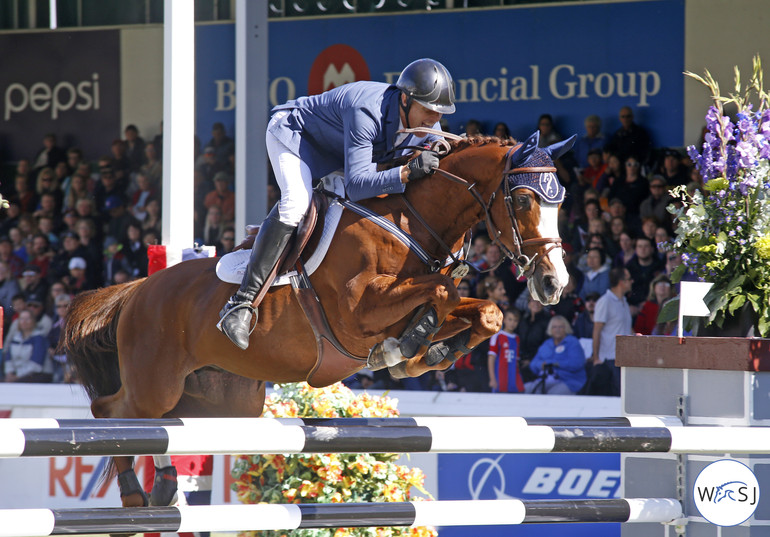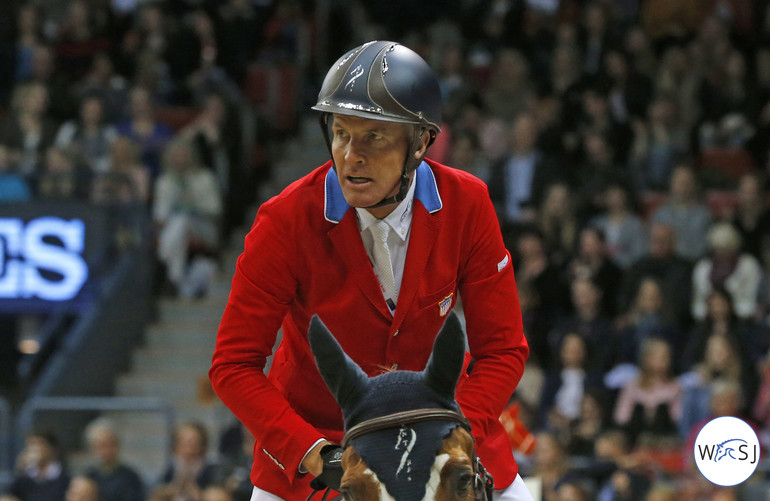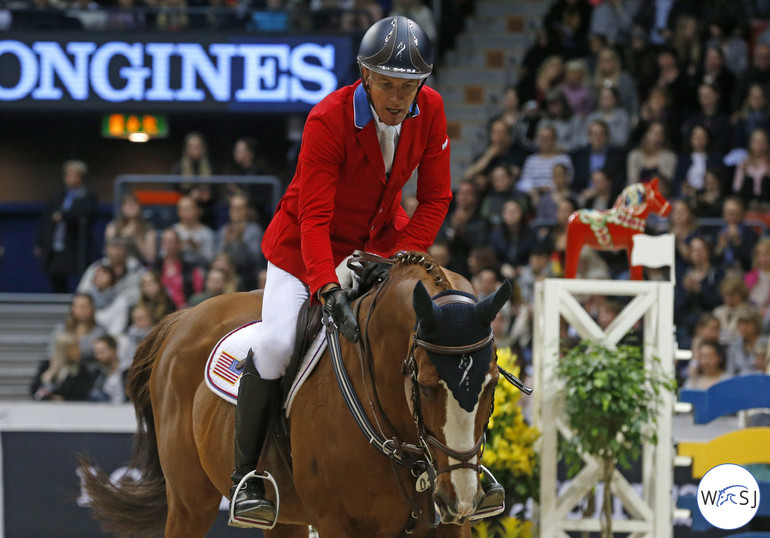Text © Tim Worden for World of Showjumping
American rider Rich Fellers is a past winner of the World Cup Finals (2012), an Olympian (finished 8th individually in 2012), has ridden three different winners of the ‘Top American Grand Prix Horse Award’, and has won a number of major Grand Prixes. He runs a vibrant training program based on the American west coast and has long championed a holistic approach to training jumpers. He achieved a number of significant milestones with his famous stallion Flexible, who he competed at the FEI level until the age of 20 – a truly impressive feat. I had the chance to catch up with Rich to get his thoughts on some aspects of training jumpers.
Tim: I have heard you say that your horses turnout after you ride or exercise them. In my experience, a lot of places will do things the opposite way – with turnout typically occurring in the morning followed by exercise. What are your thoughts on this?
Rich: True – in a lot of programs a horse typically goes straight from their box stall to a turnout paddock or pasture without any exercise beforehand. However, if the horse is feeling fresh and excited the likelihood he or she bolts into a gallop, does some bucking, turning or twisting, etc. is greatly increased. Of course, all of these actions have the potential to cause an injury.
To reduce the risk of an accident happening, a number of years ago I switched to turning my horses out after exercise. I found that riding or having the horse perform a session on a Eurociser directly before turnout warmed up the horse’s muscles and reduced the mental freshness and excitability; therefore the horse is less likely to sustain an injury. As an added bonus, your grass paddocks are less likely to be torn up. It’s a win – win!
Tim: I read that you do a lot of two-a-day workouts with your horses. What are some of the benefits of this approach and how do you structure these workouts?
Rich: Over the years I have found thatolder horses and very high energy horses can benefit from two rides per day. The older ones (15 + years) need the extra movement, strength and fitness that two-a-days can provide as they’re more difficult to keep fit and strong - just like older people. The high energy ones seem to be more ridable with the daily doubles.
With respect to structure, I typically do a full flat ride in the morning and a walk/trot ride in the afternoon. If I am jumping a high energy horse, I’ll do the walk/trot ride in the morning and the jump school in the afternoon. I find this allows the excitable horses to be more focused and I am able to accomplish much more during a jump school.
Tim: You had a long and successful career with Flexible – what is something you adapted or changed as he aged?
Rich: When Flexible turned fifteen I started riding him twice a day. As Jack Lalanne, the famous fitness and nutrition expert, once said: “When you get older it takes twice as much exercise to stay half as fit and strong”. As soon as I made the switch to two-a-days with Flexible I noticed a definite improvement in his stamina through a show week and into the next work schedule. Another important factor was to reduce, when possible, the number of rounds he jumped per show week.
Tim: With the knowledge you have now about Flexible, would you have trained him differently when you first got him?
Rich: I started with Flexible at the end of 2002. If I had the knowledge and experience then that I have now I would have done so many things differently. I can’t even begin to explain the variety of lessons learned during all those years.
Tim: You were at the High Performance Sports Medicine Symposium this spring in Oregon and heard some of the discussion there. In your opinion, what are the exciting future directions for the sport? What approaches do you think have the greatest chance to improve performance and/or reduce injury?
Rich: I’m excited about all of the new FEI competitions popping up each year in our sport. It highlights the growing popularity of show jumping and it is great to have diversity when choosing where to compete.
I believe the FEI drug rules will gradually help riders and trainers learn more about proper fitness and training to help keep their horses sound, rather than relying so much on medicating. As it becomes harder to use drugs to keep horses competing (due to more stringent testing by the FEI), riders will have to adapt by better listening to their horses and prescribing exercise and recovery in the correct proportions.
My approach to training show jumpers is very similar to the training of any athlete for any high speed strenuous sport. Good, consistent nutrition paired with proper exercise and rest make up the foundation. Also, I believe the sport should be fun for the horses - If they don’t enjoy it they won’t make the extra effort when needed.











